Japanify: Silicone Steamer Rice
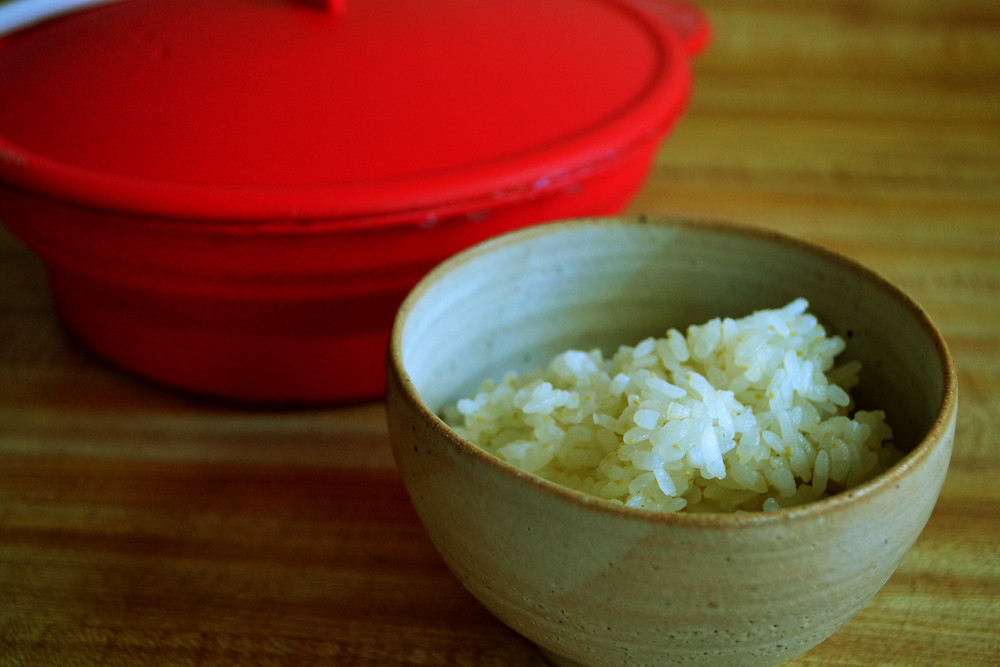
The silicone steamer craze has been in full force in Japan since 2010. With the economy tanking continuously since 2008, single men and women who have never tried their hand at cooking have taken solace in kitchenware that promise quick and easy recipes.
My friend from Tokyo who visited me last year, gave me my very own Como silicon steamer which was accompanied by a 50-page book full of recipes and lifestyle tips about eating healthy and simply.
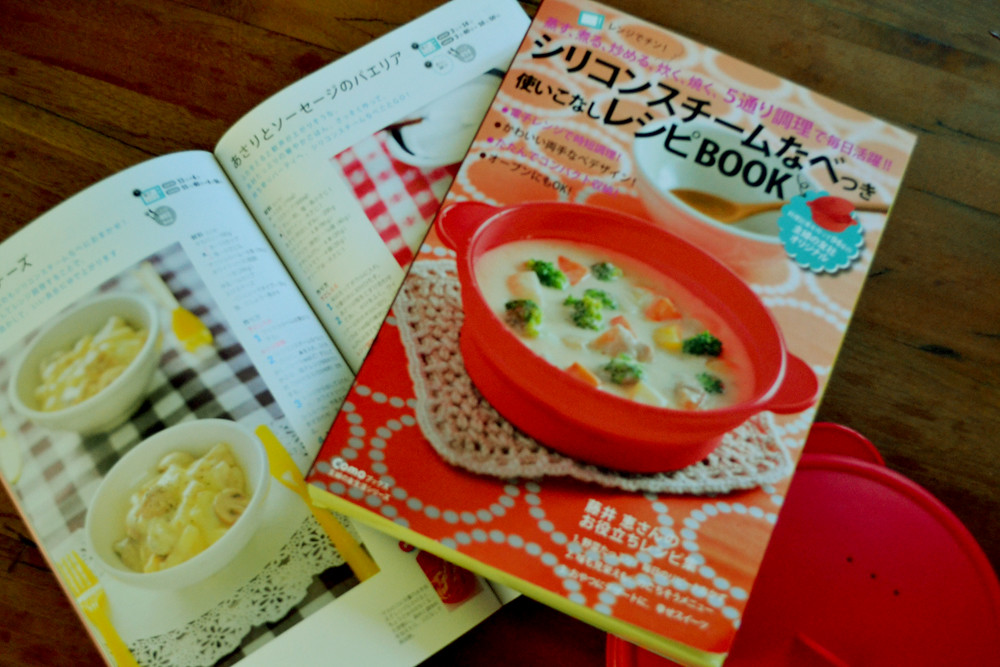
In the past year, I have only steamed asparagus and broccoli in the steamer. It's so easy and handy, I am really grateful for it when I am in a pinch. I just wash my veggies, put them in the steamer and then throw it into the microwave for three minutes. The veggies steam from their own moisture so there is no need to add any water. The end product doesn't look that great though, especially broccoli, which can look a little wilted if you aren't careful and you oversteam them. But all in all, it is a lifesaver when you are in a hurry to have some nutrients from steamed vegetables.
Today, I tried something new with my steamer. I steamed rice in it! The recipe seemed so easy... any recipe does when it involves "cooking" it in the microwave. Although I found it a fun new way to do something I do everyday, I found that my rice cooker is much easier and yields better results. I'll explain below.
INGREDIENTS
1 cup rice
1 cup water
METHOD
1. Wash rice in a bowl.
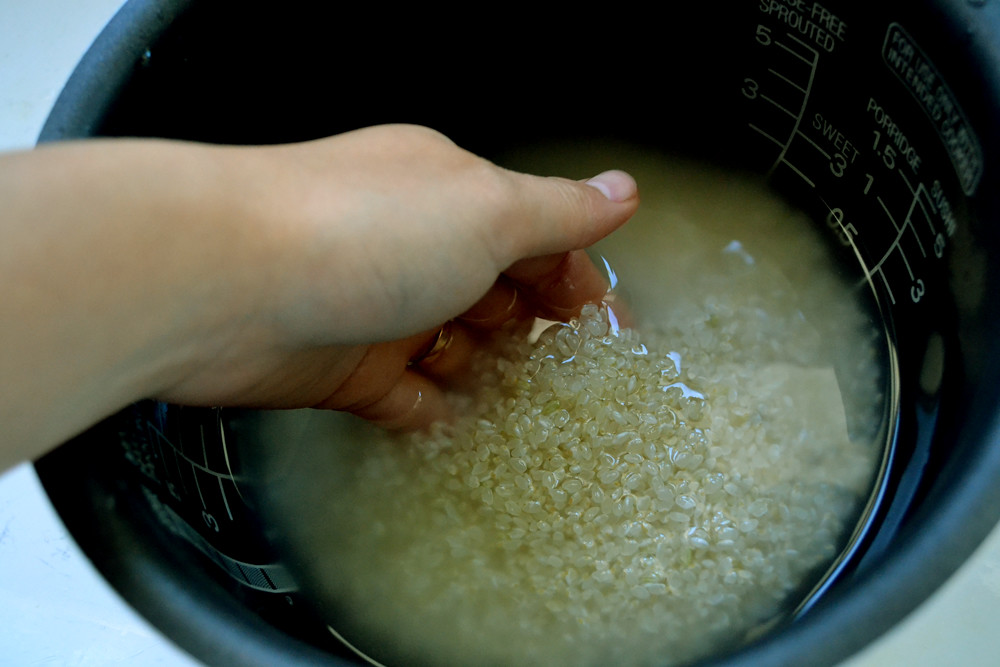
2. Transfer rice into the silicon steamer and submerge in 1 cup of water. Leave the rice soaking in water for 30 minutes.
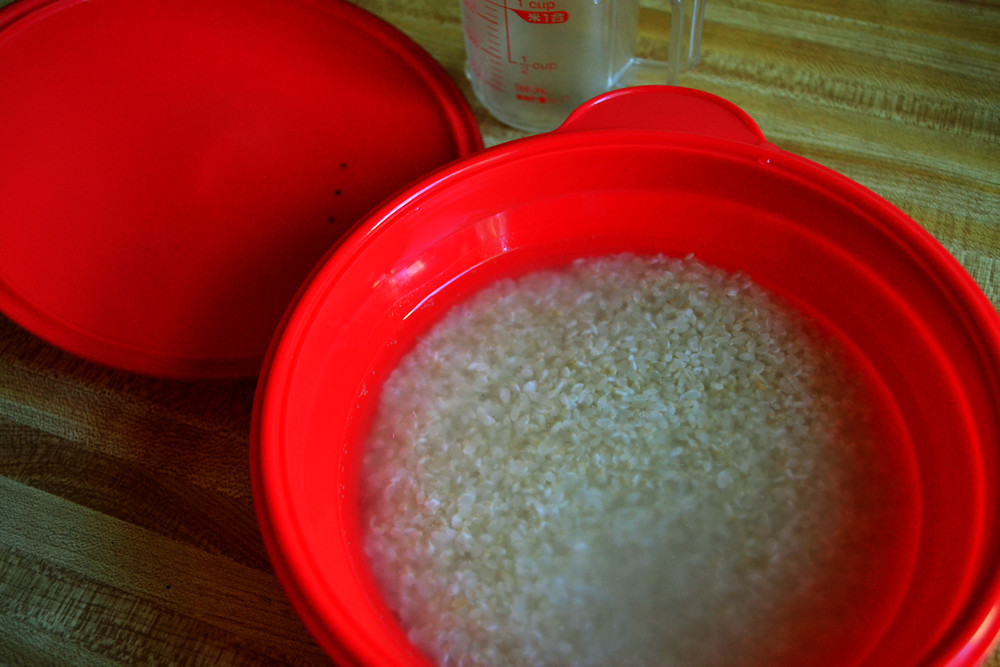
3. Put the steamer in the microwave. Cook on high (500-600W) for 6:30 minutes.
4. Cook on low (200W) for 14 minutes.
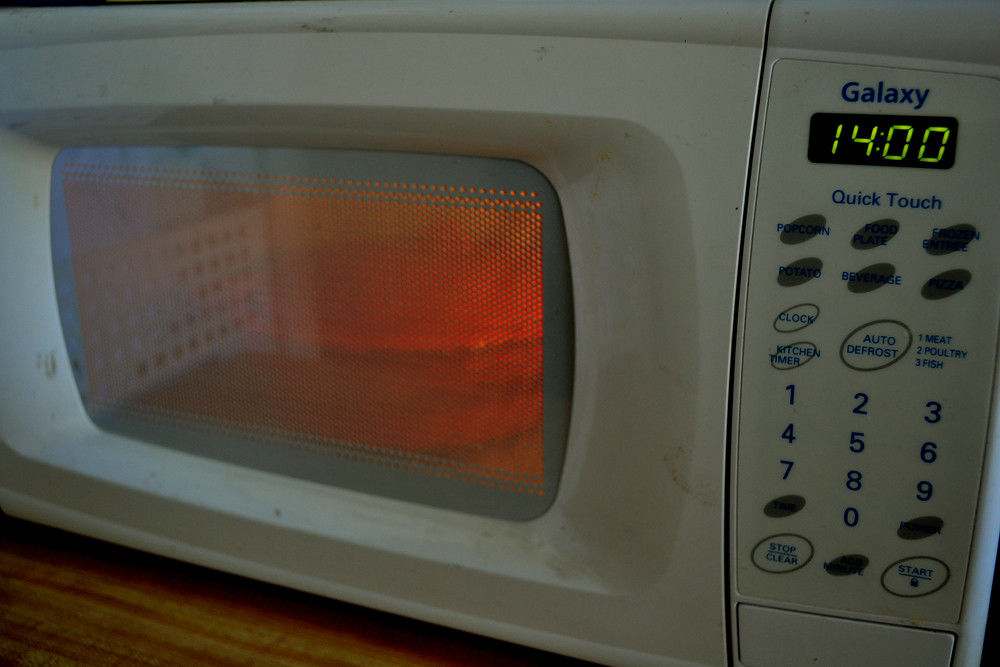
5. Do not remove the lid and let the rice cool down in the steamer for 15 minutes.
6. Eat!
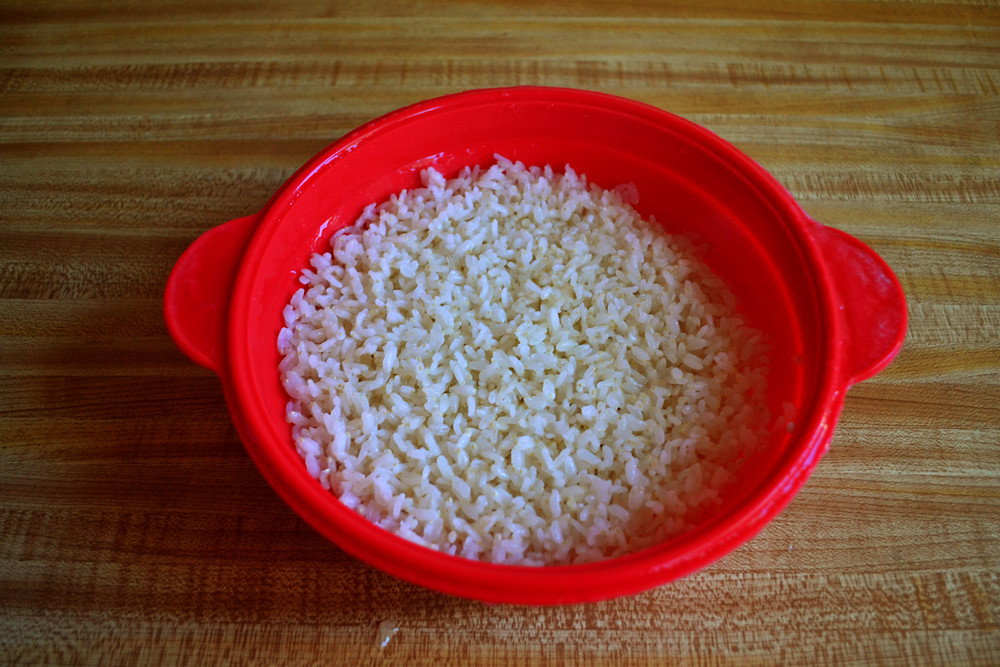
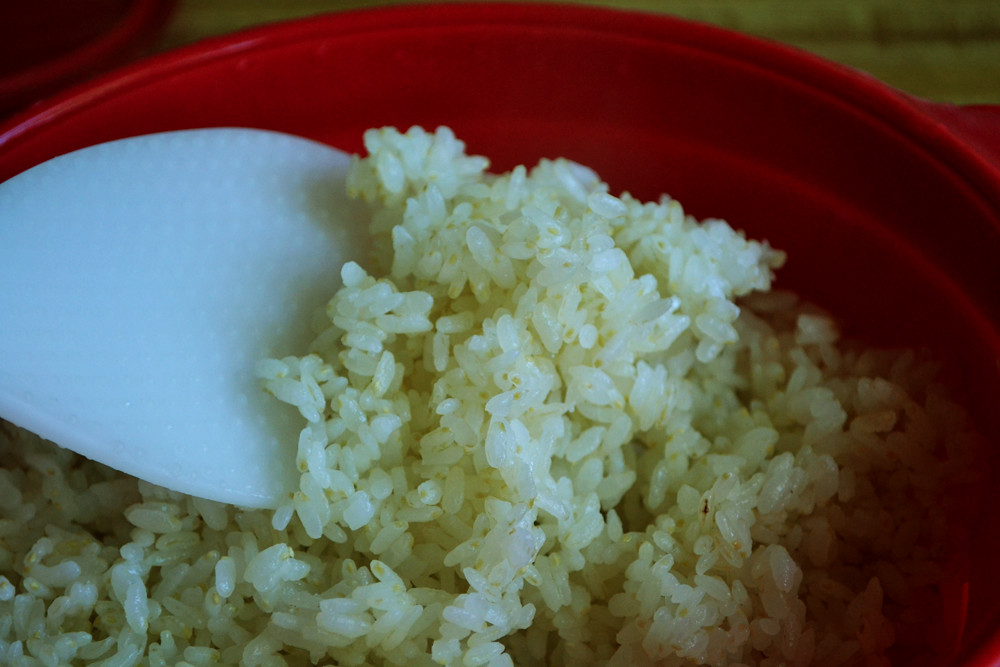
This sounds very easy, but it actually ended up taking up more of my attention and longer than my rice cooker. The first reason that it was a little burdensome is that you can't wash the rice in the silicon steamer because it is too malleable. You have to wash your rice in another bowl. For my rice cooker or when you cook rice on the stovetop, you can wash the rice in the same bowl you cook it in.
Soaking the rice for 30 minutes in water (step #2) seemed to be a requirement, whereas I can skip it in the rice cooker if I am really in a hurry and it would only affect the flavor a little.
Cooking on two different settings means that you can't just throw the steamer in the microwave and forget about it. You must return again and adjust the setting from high to low then cook it for another 14 minutes. It also bubbled over once and left some starchy drips alongside the steamer. I had to stop the cooking once to readjust the lid.
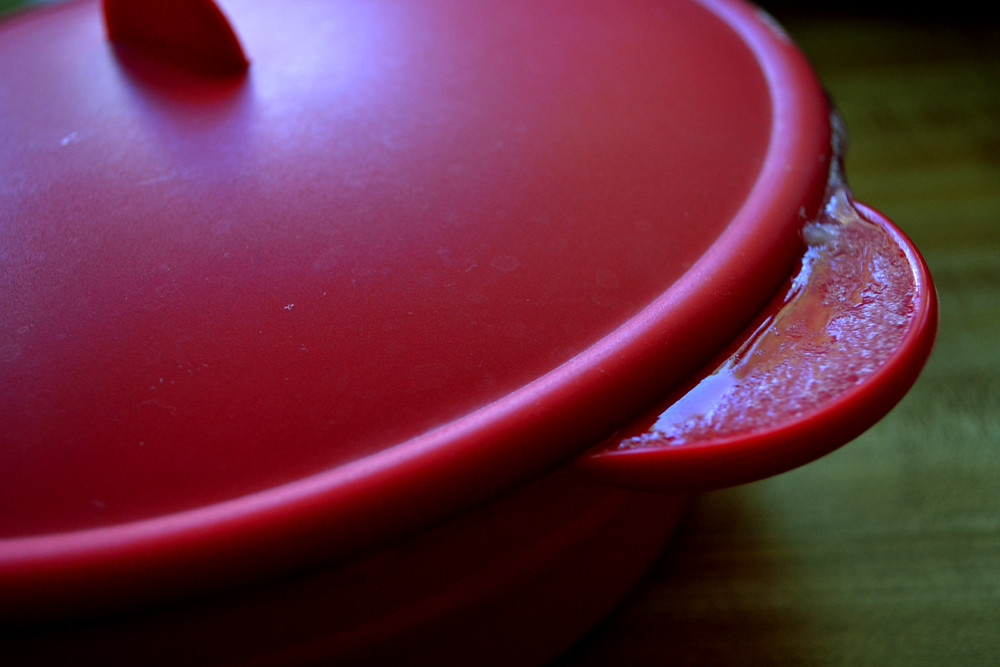
Step #5 is another step that is optional for a rice cooker. I suspect it is crucial for the silicone steamer because this is part of the cooking time as well. The rice would definitely be harder than it was if this step is ignored.
But the number one reason why I would use my rice cooker over the silicone steamer is the taste and texture. Check out the results side-by-side:
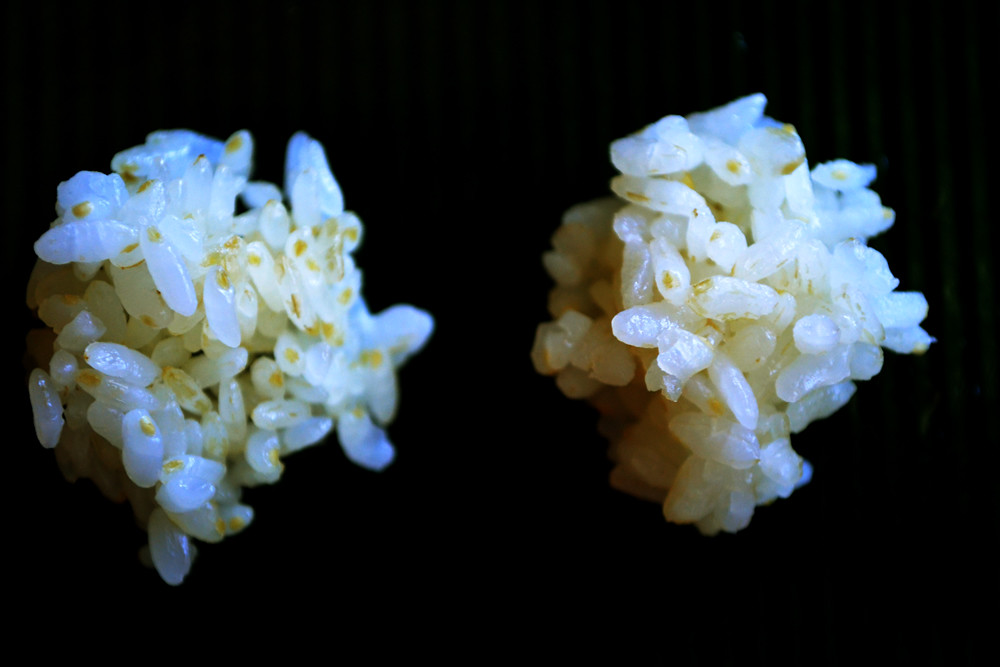 Left: silicone steamer rice; Right: rice cooker rice
Left: silicone steamer rice; Right: rice cooker riceThe silicone steamer rice was much harder and firmer than from my rice cooker. It had a tacky texture rather than a plump and sticky texture that my rice cooker yields. The rice that was cooked in my rice cooker has a fluffy texture that is completely absent from the silicone steamer rice. Notice that the silicon steamer rice grains are more pronounced and don't stick to each other like the rice on the right from the rice cooker.
Japanify Tip: Read about how to properly wash and cook rice in a rice cooker in my post from last year.
The silicone steamer was not a complete disappointment though. I am always happy to investigate a new way to steam rice. I imagined using the silicone steamer rice to make great fried rice, so I tried it.

Success.

The silicone steamer does not give you better results than a rice cooker, but is a wonderful, portable option when you don't have a rice cooker around. I can imagine bringing the silicone steamer outside of the home for a potluck or while traveling if I know I want rice, but can't count on the availability of a rice cooker.
